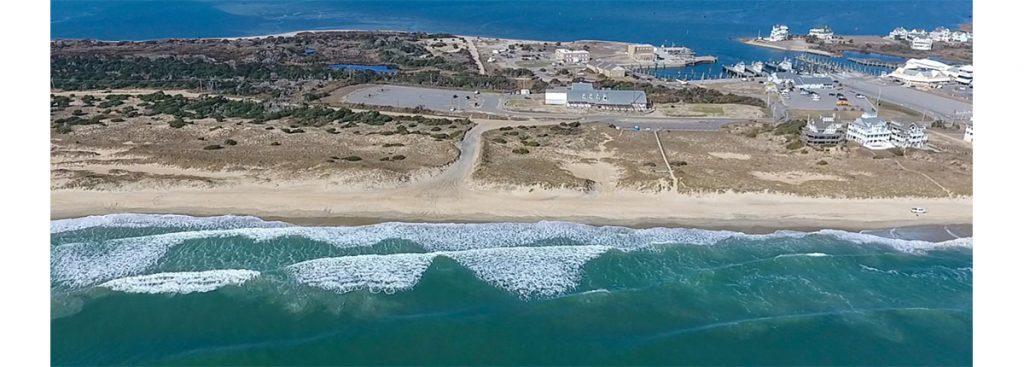
A coin whose history has already spanned more than 9,000 miles and 24 centuries has recently added another 230 miles to its journey.
The William E. and Catherine F. Sell Coin Collection, which was donated in 2006 to the Graveyard of the Atlantic Museum in Hatteras, includes 55 coins collected by William Sell from 1931 to 2001 while he vacationed along the Outer Banks. One of the oldest coins in the collection — a Ptolemaic Kingdom drachm that dates to 221-203 B.C.— is one of seven recently brought from the museum in Hatteras to the conservation lab at its sister site N.C. Maritime Museum in Beaufort for condition assessment and treatment.
“The Zeus coin cleaned up really nicely,” the N.C. Maritime Museums Conservator Michelle Crepeau said, referring to the drachm, which includes a profile of Zeus on one side and an eagle on the other. “The design stands out a little bit more.”
Crepeau said her work included removing layers of dirt, dust, old coatings and corrosion from the seven copper alloy coins, which also include two Roman coins from the third century; two Byzantine era coins (one from the sixth century and one from the 11th); and two coins of unknown provenance.
“A lot of them had some form of surface corrosion,” Crepeau said, noting that after cleaning and and chemical stabilization she also added a protective coating to the coins, creating a barrier between the artifacts and the environment as a way to prevent future corrosion, including ‘bronze disease’, a particularly destructive form of corrosion that often affects copper artifacts from maritime sites.
While her conservation work has been completed, the coins are still at the museum in Beaufort. They are awaiting transport back to the Graveyard of the Atlantic Museum and a return to their place in the Sell collection.
The collection also includes coins from China, Ecuador, England, France, Egypt, Germany, Greece, Italy, Mexico, Spain and the United States, along with the previously mentioned civilizations that no longer exist. The array of coins — whose value is more historical than monetary — is most likely tied to the number of shipwrecks off the state’s coast, N.C. Maritime Museum System Director Joseph K. Schwarzer Jr. explained. However, he added, that doesn’t necessarily mean that there were Greek and Roman sailors traversing the coast.
“The oldest of the coins were conceivably scooped up with ballast from the bottom of harbors overseas and then washed ashore here as ships broke up alongside our state’s treacherous shoals,” Schwarzer said.
There may also be some pirate loot in the haul.
“Pirates would not have cared where a coin came from but would care about the material used to make them,” Schwarzer said. “So the oldest silver coins could possibly have been carried here as ‘treasure.’”
The newer coins? It’s just as likely they were dropped by international tourists visiting a popular vacation spot, he said.
The collection is not currently on public exhibit at the Graveyard of the Atlantic Museum. Coins are notoriously hard to display in a format that allows visitors to see detail, as well as both sides, and understand the history and significance. Funding is needed for the nonprofit museum to move forward with plans to create an exhibit that appropriately showcases the collection. That exhibit, as conceived, would include each coin displayed in a traditional case with a moveable magnifier to enlarge details. An accompanying electronic display would allow visitors to further explore each coin’s history and significance.
For more information or to make a donation toward the project, visit graveyardoftheatlantic.com.
By Cyndi Brown, Public Information Officer, N.C. Maritime Museums

